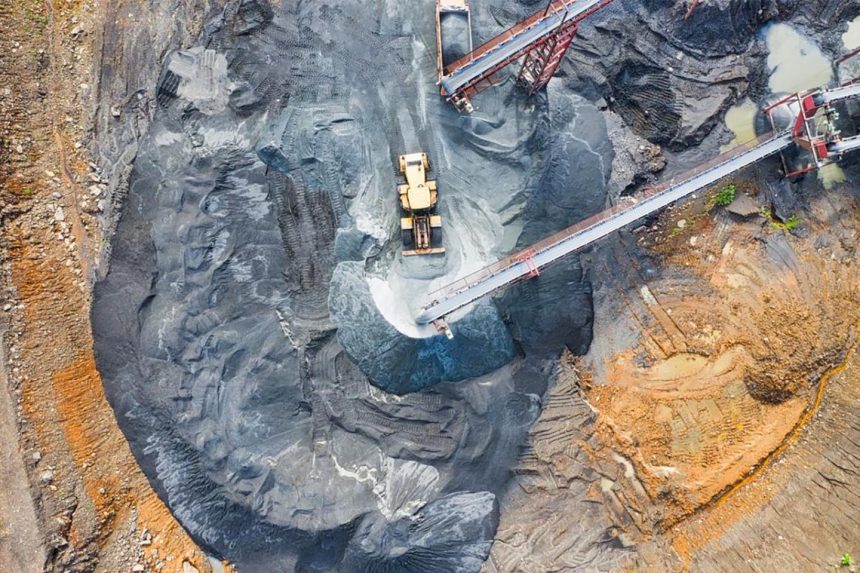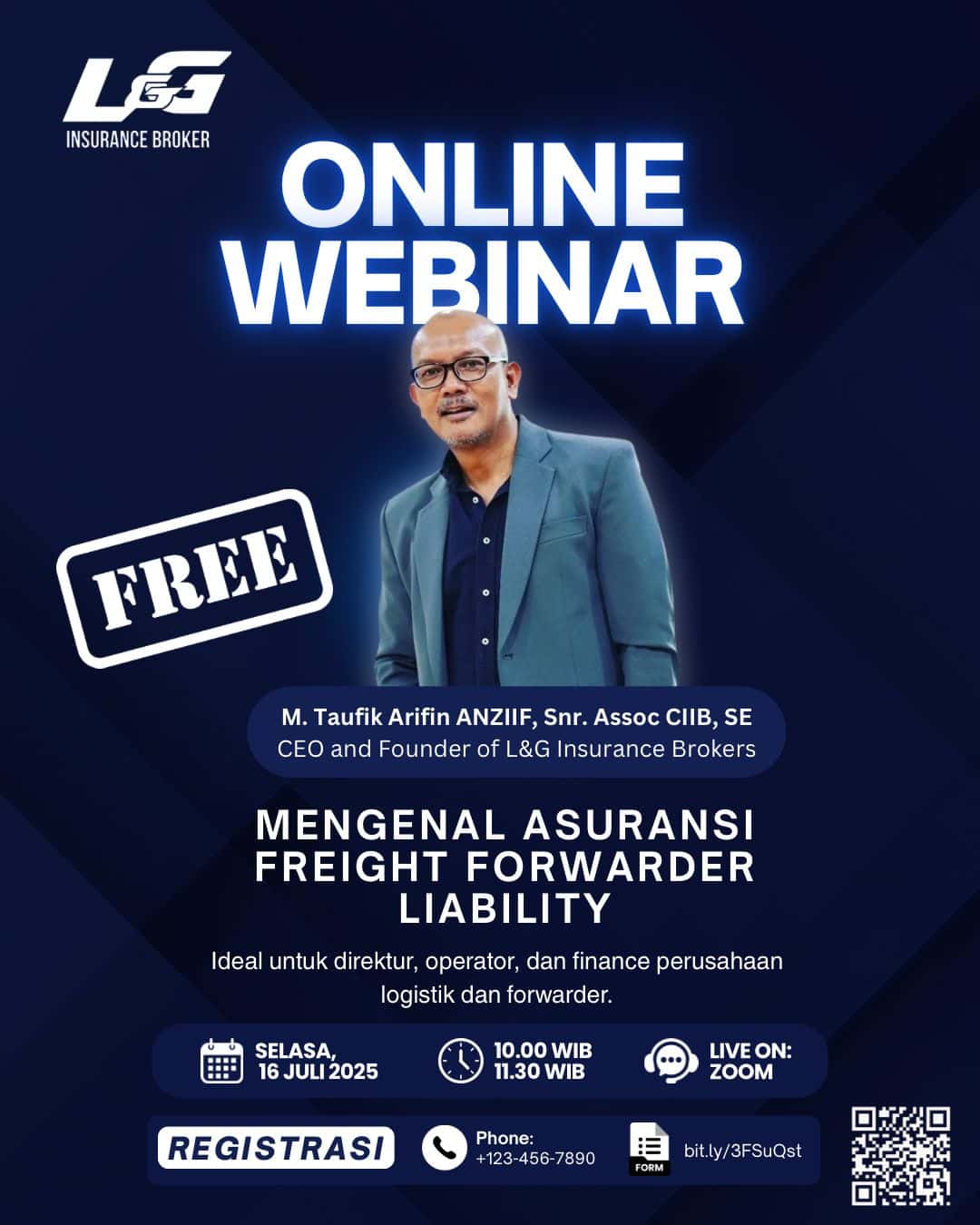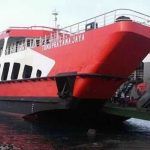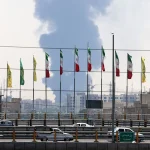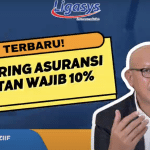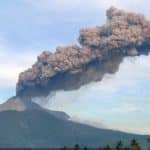Liga Asuransi – Mining friends, how are you?
May your business always be successful and continue to grow rapidly. Welcome back to our blog, a special space that discusses in depth risk management and insurance for various sectors, including the mining industry which is full of challenges and opportunities.
This time, we invite you to explore interesting topics about the prospects and opportunities for the mining industry in 2025, a year full of potential for this vital sector. With a variety of new trends, from mineral downstreaming, energy transformation, to the application of advanced technology, the Indonesian mining industry is ready to face a promising future.
If you found this article useful, please feel free to share it with your colleagues in the mining industry. Together, let’s create a more resilient, innovative and sustainable mining business ecosystem. Happy reading and hopefully inspiring!
The mining sector in Indonesia has a very important role in the national economy. With abundant natural resources, Indonesia is one of the main producers and exporters of coal and minerals in the world. Coal, which is one of the main energy sources, not only meets domestic needs but is also a leading export commodity, making a significant contribution to state income. On the other hand, minerals such as nickel, copper, bauxite and tin are increasingly gaining global attention because of their vital role in supporting the development of advanced technologies, such as electric vehicle (EV) batteries and renewable energy.
In the national economy, this sector is the main source of foreign exchange, absorbs labor, and supports infrastructure development through taxes and royalties. Apart from that, this sector is also the backbone for mining producing areas, encouraging local economic development.
However, global trends bring new challenges and opportunities. The global energy transition towards clean energy has shifted the focus from coal as a fossil fuel to critical minerals needed for environmentally friendly technologies. Additionally, increasing attention to environmental, social and governance (ESG) issues is forcing industry players to adapt to new standards. In the midst of fluctuating commodity prices and regulatory pressure, the Indonesian mining sector has a great opportunity to strengthen its position in the global market, especially through downstreaming and technological innovation.
Current Conditions of the Mining Industry
- Production and Consumption
In 2024, Indonesia’s coal production will reach impressive figures, with total production estimated at more than 700 million tons. Most of this production is allocated for export, with China and India as the main markets. On the other hand, domestic consumption also showed an increase, especially to support the needs of domestic steam power plants (PLTU) which continue to operate as the main energy source.
Meanwhile, the mineral sector, especially nickel, copper and bauxite, also recorded significant production growth. Indonesia, as the world’s largest nickel producer, has taken advantage of the increasing global demand for raw materials for electric vehicle batteries. In 2024, processed nickel production will jump by more than 20% compared to the previous year, with the majority exported to the Chinese and European Union markets.
The contribution of this sector to exports and state income is very large. Coal and minerals are the main foreign exchange contributors with a total export value reaching hundreds of billions of US dollars. In addition, state revenues through taxes, royalties and dividends from mining companies make a significant contribution to the APBN, supporting national development.
- Government policy
The Indonesian government continues to strengthen the mining sector through various strategic policies. One of the main focuses is the mineral downstream program, which aims to increase the added value of domestic natural resources. This policy is realized through the obligation to process and purify minerals before export. For example, the ban on raw nickel ore exports that came into effect in 2020 continues to encourage investment in smelter construction, with more than 20 new smelters projected to be completed by the end of 2024.
Apart from that, the Job Creation Law has had a major impact on this sector. This law simplifies licensing, makes investment easier, and provides legal certainty for mining business actors. However, challenges remain, such as consistent application of regulations in the field and monitoring the environmental impacts of mining activities.
Other supporting policies are tax incentives for investment in the downstream sector and development of sustainable mining technology. The government also introduced measures to increase transparency, such as implementing an online reporting system for mining company royalties and taxes, which helped promote accountability in the sector.
- Global Market Dynamics
Global demand for coal and minerals in 2024 will remain high despite pressure on the use of fossil energy. Coal is still an important commodity for energy needs in developing countries such as India and China. In addition, Europe, which previously reduced its dependence on coal, has again increased its imports of Indonesian coal due to the energy crisis triggered by the geopolitical conflict in Ukraine.
On the other hand, demand for critical minerals, such as nickel, copper and cobalt, continues to increase as the global energy transition accelerates. Technologies such as lithium-ion batteries and solar panels require a steady supply of these minerals. Indonesia, with the world’s largest nickel reserves, is in a very strategic position to meet the needs of this market.
However, global competition is getting tougher. Countries such as the Philippines and Australia continue to increase production capacity and strengthen their supply chains. Indonesia’s position as a major exporter faces challenges, especially from sustainability issues and international pressure regarding environmentally friendly mining practices.
Apart from that, fluctuations in commodity prices in international markets are a major challenge. Coal prices, for example, experienced a sharp increase in early 2024 due to increased demand, but fell again in the middle of the year due to slowing global economic growth. A similar thing happened to nickel prices, which spiked due to a surge in demand for electric vehicles, but stabilized again after global supply began to increase.
Trends and Opportunities in 2025
- Downstreaming and Added Value
The mineral downstream program continues to be the main focus of the Indonesian government to increase the added value of domestic natural resources. Downstreaming allows the processing of mineral ore into semi-finished products or finished products, thereby providing higher economic value compared to exports of raw materials. Great opportunities arise from the increasingly massive construction of smelters, especially in the nickel, bauxite and copper sectors.
By 2025, more than 30 smelters are projected to be operational, most of which are supported by foreign investment. The impact is significant on exports, where Indonesia is not only an exporter of raw materials but also products such as ferronickel, processed copper and aluminum. This downstreaming increases Indonesia’s competitiveness in the global market while reducing dependence on fluctuating raw commodity prices.
- Energy Transformation
The global energy transformation towards renewable energy creates new opportunities for the Indonesian mining sector. Although the use of coal is under pressure from decarbonization efforts, its role as a transition energy is still relevant. Indonesia can take advantage of this opportunity by encouraging the use of cleaner technologies, such as carbon capture and storage (CCS) technology, to maintain coal market share while meeting environmental standards.
In addition, critical minerals such as nickel, cobalt and copper are the main pillars in supporting the development of the battery and electric vehicle (EV) industry. Indonesia, as the world’s largest nickel producer, has a strategic position to meet global demand. With large investments in the EV and battery industry, Indonesia can become a battery manufacturing center in the Southeast Asia region, which will support exports to global markets, including China, Europe and the United States.
- Digitalization and Technological Innovation
Digitalization is one of the main trends in the mining sector. The Mining 4.0 concept, which integrates technologies such as artificial intelligence (AI), Internet of Things (IoT), and big data, opens up huge opportunities to increase operational efficiency and reduce environmental risks.
Digital technology enables more accurate predictions of mineral reserves, real-time monitoring of mining activity, as well as heavy equipment automation that reduces dependence on manual labor. On the other hand, the use of drones for mine surveys and environmental monitoring helps mining companies meet sustainability standards.
Apart from efficiency, technology can also improve work safety. With IoT-based monitoring, the risk of accidents at mining sites can be minimized, thereby supporting safer and more environmentally friendly mining practices.
- Investment and Funding
Domestic and foreign investment trends in the mining sector show positive prospects in 2025. Foreign investment continues to flow, especially from countries that need critical mineral supplies for their technology industries. The development of supporting infrastructure, such as smelters and mining ports, has become a magnet for investors.
However, global economic uncertainty, including fluctuations in commodity prices and monetary policies in developed countries, poses challenges for funding this sector. Mining companies must find innovative sources of funding, such as through green bonds or strategic partnerships for sustainable projects.
In conclusion, 2025 offers great opportunities for the Indonesian mining industry to continue to grow, especially through downstreaming, energy transformation and technological innovation. However, challenges such as funding and sustainability must be addressed with the right strategies to ensure sustainable growth.
Strategies to Support Sustainable Growth
- Government and Private Collaboration
Collaboration between the government and the private sector is key to driving sustainable growth in the mining sector. The government has a strategic role in creating policies that are conducive to investment, such as simplifying licensing through a digital system, providing tax incentives, and enforcing transparent regulations. This not only increases the interest of domestic and foreign investors, but also speeds up the mineral downstream process.
In addition, collaboration with private companies is needed to encourage innovation in the mining sector. The government can provide support in the form of research and development (R&D) funding for new technologies, such as environmentally friendly mining technology and carbon capture. For example, collaboration in developing energy-efficient smelter technology can increase efficiency and reduce carbon emissions, thereby supporting sustainability targets.
- Human Resource Development
The development of competent human resources (HR) is a priority to ensure the sustainability of the mining sector. The mining industry needs a skilled workforce, not only in traditional operations but also in the application of new technologies such as automation, big data and artificial intelligence (AI). Therefore, technology-based training and education is an important step.
Mining companies, together with educational and training institutions, can create specialized training programs focused on modern technology and sustainability management. Certification programs in the mining sector can also be expanded to increase workforce competency, especially in environmental management and work safety.
Apart from technical training, leadership and management development in the mining sector also needs to be considered. Leaders who are able to combine operational efficiency with a vision of sustainability will be the key to building a more resilient and innovative mining industry.
- Focus on ESG and Green Mining
Sustainable mining practices are now a major requirement to meet Environmental, Social, and Governance (ESG) standards which are increasingly receiving global attention. Mining companies must commit to reducing environmental impacts through effective waste management, use of renewable energy, and post-mining land rehabilitation.
ESG integration in business strategy also includes social commitments, such as providing a positive impact on communities around the mine. This can be done through infrastructure development, community empowerment, and wise management of social conflicts.
The application of the green mining concept, which prioritizes resource efficiency and environmentally friendly technology, must become the operational standard for the mining industry. By focusing on ESG and green mining, Indonesian mining companies can not only meet global market demands but also build a strong reputation as leaders in sustainability. This strategy will help create an industry that is not only profitable but also socially and environmentally responsible.
The Important Role of Insurance Guarantees in the Mining Industry
The mining industry is characterized by high risk, both in terms of operations, environment and finance. Therefore, various types of insurance coverage play an important role in protecting mining companies from potential large losses that could disrupt the continuity of their business.
- Construction and Erection Insurance (CAR/EAR)
During the construction phase of mining facilities, CAR/EAR insurance protects the project from losses due to construction accidents, equipment damage, or natural disasters. This ensures smooth construction without additional financial burden.
- Property and Machinery Insurance
Mining facilities, such as smelters, workshops and conveyor belts, are protected from the risk of fire, explosion or mechanical damage. This protection is important to maintain the continuity of mining operations.
- Heavy Vehicle and Heavy Equipment Insurance
Considering the high value of heavy equipment assets in mines, this insurance protects against losses due to accidents, damage or theft.
- Liability Insurance
Through general and environmental liability insurance, mining companies are protected from third party claims resulting from environmental damage or work accidents involving the community.
- Business Interruption Insurance
If mining operations are disrupted by a disaster, this insurance helps replace lost revenue, maintaining the company’s financial stability.
With the right insurance support, mining companies can manage risk more effectively, ensuring protection of their assets, operations and reputation. This also increases the company’s attractiveness to investors and business partners.
The Importance of Using an Experienced Insurance Broker
The mining industry faces a high complexity of risks, including work accidents, heavy equipment damage, operational disruptions, and environmental impacts. To manage this risk optimally, mining companies need experienced insurance brokers, such as L&G Insurance Brokers, who have specific expertise in this sector.
Expertise in Risk Identification
L&G Insurance Broker understands the unique risks in the mining industry, from exploration to operations. With experience in handling large projects such as coal, nickel and copper mines, L&G is able to provide comprehensive risk analysis and appropriate protection solutions.
Access to Global Insurance Markets
As an experienced broker, L&G has extensive access to domestic and international insurance markets. This allows mining companies to get the best protection at competitive premiums, including policies that cover high risks such as environmental liability and business interruption.
Negotiation and Claim Settlement
L&G has a track record of success in negotiating policies that benefit clients and resolving claims quickly and transparently. This ensures mining companies can focus on operations without worrying about complicated claims processes.
Special Services and Digitalization
With the support of digital systems such as LIGASYS, L&G provides services that are fast, transparent and easy to access. This system helps mining companies monitor policy and claim status in real-time.
Using a broker like L&G not only provides optimal protection, but also increases the efficiency, certainty and reputation of mining companies in dealing with complex risks.
Conclusion
The mining industry in Indonesia has a strategic role in the national economy, but is faced with high risks that require careful management. To mitigate these risks, insurance is a crucial element in protecting mining companies’ assets, operations and reputation. Various types of insurance, from property, heavy equipment, to environmental liability, ensure business continuity amidst complex challenges.
Using an experienced insurance broker like L&G Insurance Brokers provides significant benefits. With deep expertise in the mining sector, broad access to the global insurance market, and technology-based services, L&G is able to provide optimal protection solutions. Collaboration between mining companies, governments and insurance brokers is key to driving sustainable growth through innovation, risk management and the implementation of ESG practices. With this approach, the Indonesian mining industry is ready to face future challenges and opportunities.
For all your insurance needs, Contact L&G Insurance Brokers Today!
—
Don’t waste your time and secure your finances and business with the right insurance.
HOTLINE L&G 24 JAM: 0811-8507-773 (CALL – WHATSAPP – SMS)
website: lngrisk.co.id
Email: customer.support@lngrisk.co.id
—

